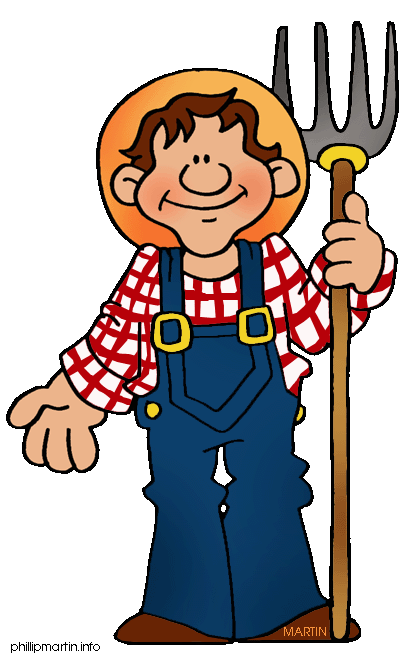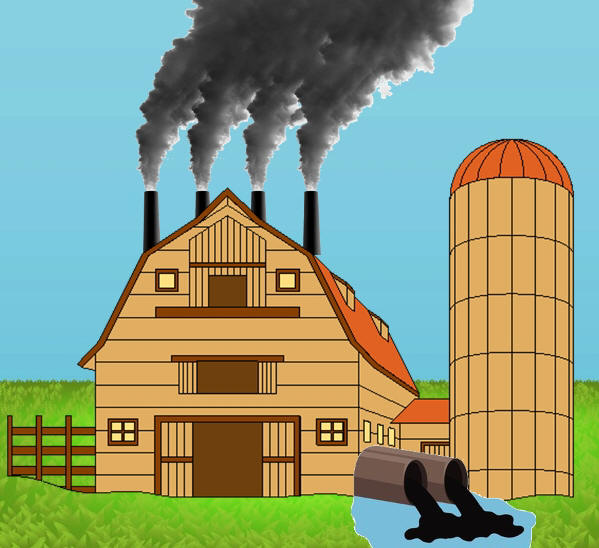"The picture of this barn is what radical animal rights and environmental groups want you to believe modern farming operations have become. They present farming operations as water polluting, air dirtying factories. When you think of a farmer they want you to think of a person who does not care about you, the land, the water, the air or their animals. These groups present farmers as greedy, uncaring individuals who will sacrifice everything that is good to make a dollar. They want you to believe their lies. Let's explore the truth about factory farms. " |
|||||
|
|
|||||
First, What is a Factory?From Noah Webster's 1828 Dictionary - 3. Contracted from manufactory, a building or collection of buildings, appropriated to the manufacture of goods; the place where workmen are employed in fabricating goods, wares or utensils. *Note: a factory is a place where raw materials are manufactured into items that are different from the materials used. While there is a net gain in value there is no net gain in materials. |
|||||
|
Second, What is a Farm? From Noah Webster's 1828 Dictionary - 2. In the United States, a portion or tract of land, consisting usually of grass land, meadow, pasture, tillage and woodland, cultivated by one man and usually owned by him. A like tract of land under lease is called a farm; but most cultivators are proprietors of the land, and called farmers. *Note: a farm is where crops and animals are raised that resemble the seeds and parent animals. Crops and animals are not manufactured they are raised. There is a net gain in animals and crops and value. |
|||||
|
Third, What is a Factory Farm? From the two definitions there is no such thing or place as a factory farm! The term "factory Farm" originated in the 1960's by groups who actually want to stop all livestock operations. These groups would include radical animal rights groups such as P.E.T.A and vegans. As market conditions and government regulations forced more and more small and especially mid-sized family farms out of business. They were combined into larger land and livestock operations that were still a family farms. These large livestock operations (especially pork and poultry) became "confined" operations where the hogs and chickens are raised in buildings. The radical animal right groups started calling these large farms "factory farms" with the intent to get consumers to believe their half-truths and out right lies about the meat they produce. In the last few years organic farming groups have joined with the animal right groups by using this term to create a false impression of conventional farming operations. The real truth there is no such things as factory farms only large farming operations where modern and more efficient practices are used. If you search the Internet for information about "factory farms" you will find many websites that will tell you all the "terrible" things about them. Very few will tell you both sides of the issue. I am going to present both side here. My question is why not call them what they: Larges Farms of CAFO's [concentrated animas farming operations]. |
|||||
|
|
|||||
|
Did you know?
Conclusion: one large livestock operation with 2000 animals produces more meat with less feed in less time than 50 small farms with 40 animals. |
|||||
|
|
|||||
|
There are some problems caused by these large farming operations.
|
|||||
|
|
|||||
|
Some questions for you to
think about If animals on these large farms are mistreated why are they so efficient when it comes to meat production? A sick or mistreated animal will not do well under any circumstances. If 1000 animals die on one farm it is news. When 2 animals die on each of 1000 farms the 2000 are not reported by the news. Why? |
|||||
|
Small local farms can not feed New York City. Think about these numbers.
*If a semi -truck can haul 50,000 pounds of food it would take 20 semis to haul 1,000,000 pounds of food. *If a pickup truck can haul 2000 pounds of food it would take 500 pickups to haul 1,000.000 pounds of food.
The population of New York City is about 8,400,000 people. *If each person in New York eats 2 pounds of food a day it would take 16,800,000 pound of food each day to feed the city. *It would take 336 semi loads of food each day to feed New York *It would take 8400 pick-up loads of food each day to feed New York.
*Small local farms can not supply New York with vegetables in the winter. *Small local farms can not supply New York with Oranges.
NOTE - The figures above do not take in account the greater New York area or the number of tourist and workers who enter New York City each day. |
|||||
|
Consider These Stats: New York area - 19 Million Boston area - 4 million Atlanta area - 6 million Chicago Area - 9 million San Francisco area - 3 million Los Angeles area - 12 million |
|||||
|
Visit these links with more information. More coming soon! My Job Depends On Ag |
|||||
| Why Factory Farming Isn't What You Think (forbes.com) | |||||
| Overview of Greenhouse Gases | US EPA | |||||
|
f |

